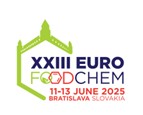Scientific journal
Journal of Food and Nutrition Research
Summary No. 2 / 2014
Bolanho, B. C. – Egea, M. B. – Jácome, A. L. M. – Campos, I. – de Carvalho, J. C. M. – Danesi, E. D. G.
Antioxidant and nutritional potential of cookies enriched with Spirulina platensis and sources of fibre
Journal of Food and Nutrition Research, 53, 2014, No. 2, s. 171-179
Beatriz Cervejeira Bolanho, Department of Technology, Maringa State University, Av. Angelo Moreira da Fonseca 1800, 87506-370 Umuarama, Paraná, Brazil.
Tel: +55 44 3621 9342, fax: + 55 44 3621 9326, e-mail: beatrizbolanho@yahoo.com.br
Summary: The use of by-products is an important strategy to valorize agro-industrial productive chains. The production of low-cost functional foods is a concern of the food industry. The aim of this work was to investigate the chemical composition and the technological, microbiological, sensorial and antioxidant properties of four formulations of cookies, produced with the replacement of 20% of wheat flour by equal proportions of flours from by-products (cassava, soybean and peach palm) and with the addition of Spirulina platensis (2% or 5%, dry basis). The formulation containing composite flour and 5% of biomass, had an increase of 20% of protein, 30% of ash and 96% of fibre when compared to the control. Due to the high level of total phenolic compounds (12.2 g·kg-1) and antioxidant capacity (mean value 40.3 mmol·kg-1, as Trolox equivalent) of S. platensis, this formulation had an increase of 64% of phenolic compounds and 37% of antioxidant capacity in relation to the control. The nutritional enrichment showed that the formulations tested were viable, despite the decrease in the sensorial acceptance and the alterations in technological properties. The microbiological analysis showed that the formulated products were within the limits of the Brazilian legislation.
Keywords: Spirulina platensis; fibre; antioxidant potential; functional foods; by-products
Download:
(pdf, 181.39 Kb, 9106x)










